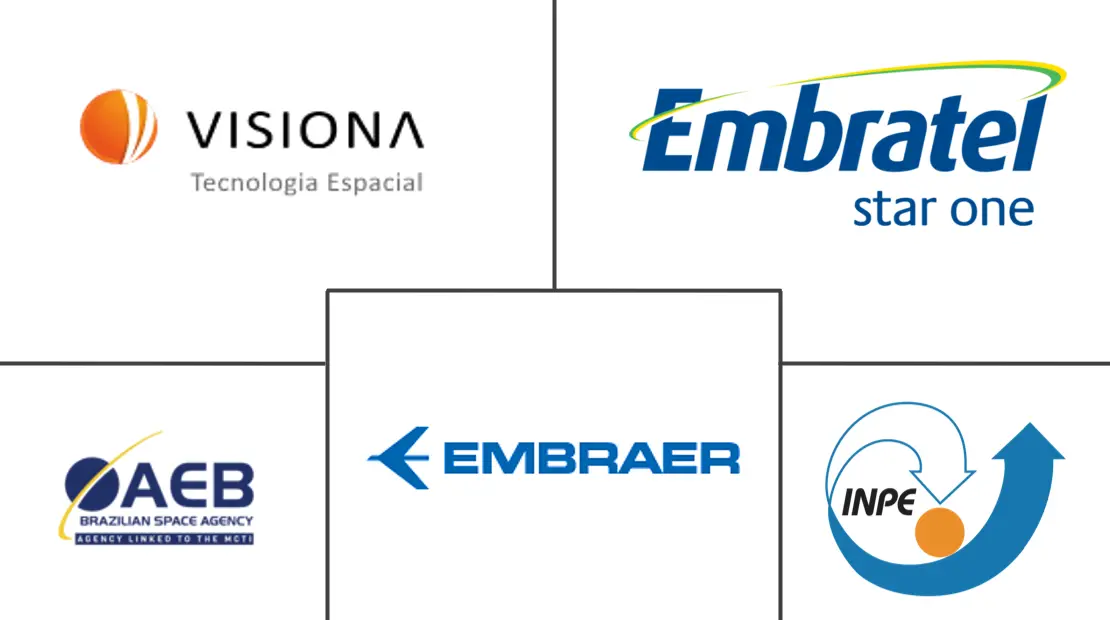Brazil Satellite-based Earth Observation Market Size and Share
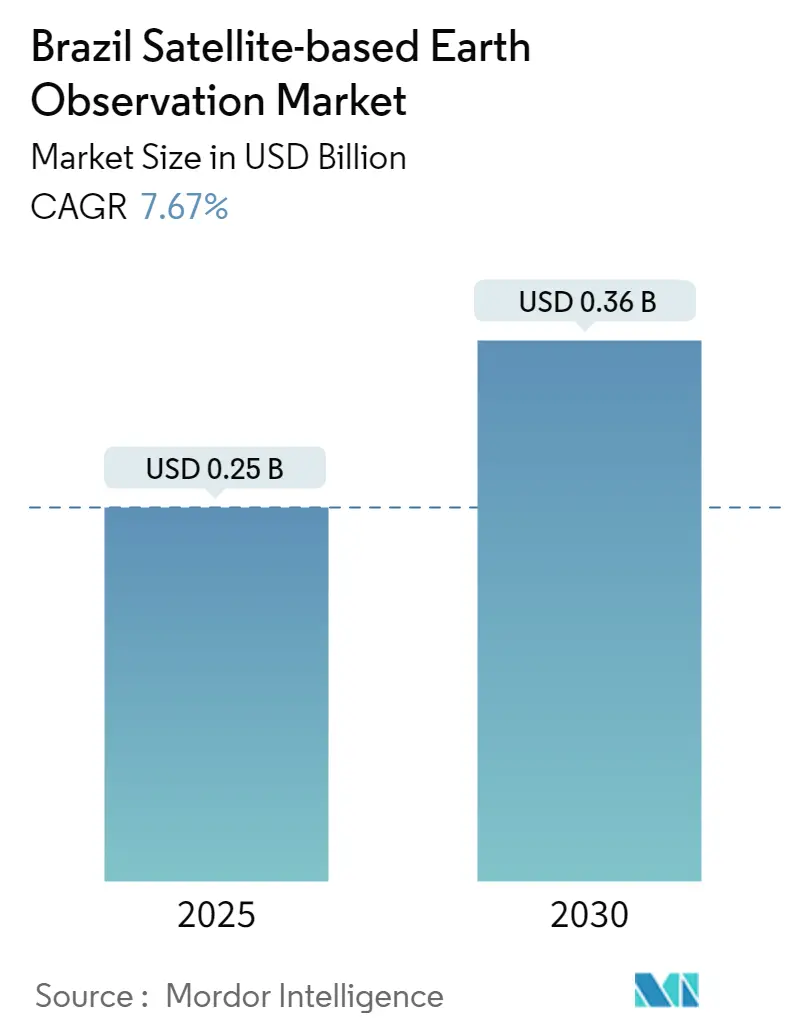
Brazil Satellite-based Earth Observation Market Analysis by Mordor Intelligence
The Brazil Satellite-based Earth Observation Market size is estimated at USD 0.25 billion in 2025, and is expected to reach USD 0.36 billion by 2030, at a CAGR of 7.67% during the forecast period (2025-2030).
The advancement of satellite technologies, such as higher spatial resolution, improved spectral capabilities, and enhanced data processing techniques, is opening up new opportunities in the field of Earth observation. These advancements are expected to drive innovation, increase the availability of high-quality data, and expand the applications of satellite-based Earth observation in Brazil.
- Satellite-based Earth observation refers to the use of satellites to collect data and imagery of the Earth's surface for various applications, including environmental monitoring, agriculture, disaster management, infrastructure development, and remote sensing.
- Brazil, with its vast geographical expanse and diverse ecosystems, presents a unique set of challenges and opportunities for satellite-based Earth observation. The market in Brazil is driven by several factors, including government initiatives, increasing demand for environmental monitoring, agriculture optimization, disaster management, urban planning, and remote sensing applications.
- The Brazilian government has been actively promoting the use of satellite-based Earth observation to address environmental concerns, including deforestation in the Amazon rainforest. The government's initiatives and investments in satellite infrastructure and related technologies are playing a crucial role in driving market growth. These efforts aim to monitor deforestation, combat illegal activities, protect biodiversity, and assess the impact of climate change.
- The market is further fueled by the growing demand for remote sensing applications. Satellite imagery and data are utilized for mapping, geology, natural resource exploration, and environmental assessment. Brazil's exploration and exploitation of its natural resources drive the need for remote sensing capabilities, further contributing to the market's growth.
- However, the implementation and operation of satellite-based Earth observation systems require significant investments in infrastructure, satellite launches, ground stations, data processing, and analysis. Budgetary constraints can limit the government's ability to allocate sufficient funds for the development and maintenance of such systems, thereby restraining market growth.
Brazil Satellite-based Earth Observation Market Trends and Insights
Company Initiatives Coupled with Government Support to Drive the Market Growth
- Companies operating in the market are making substantial investments in satellite infrastructure, including developing and deploying advanced satellites equipped with state-of-the-art imaging sensors and data collection capabilities. These initiatives enhance the availability and quality of satellite data, supporting a wide range of applications.
- In December 2023, satellite TV was the top choice for pay TV technology in Brazil, comprising 54% of all subscriptions in the country, as reported by Agência Nacional de Telecomunicações which indicate the robustness and growth potential of the Brazil Satellite-based Earth Observation market.
- Further, market participants are investing in data analytics and value-added services to extract actionable insights from satellite data. They are developing advanced algorithms, machine learning models, and data processing tools to provide customers with meaningful information and decision-making support. This added value enhances the market appeal and drives growth.
- Additionally, the government promotes data sharing and open access to satellite data, encouraging market players to use and share satellite imagery and related datasets freely. This accessibility to data stimulates innovation, fosters collaboration, and drives the development of new applications and services.
- Overall, the combined effect of company initiatives and government support creates a favorable ecosystem for the growth of the Brazil Satellite-based Earth Observation market. It facilitates technological advancements, expands service offerings, drives innovation, and promotes the widespread adoption of satellite-based solutions across various sectors, ultimately contributing to the overall growth and development of the market.
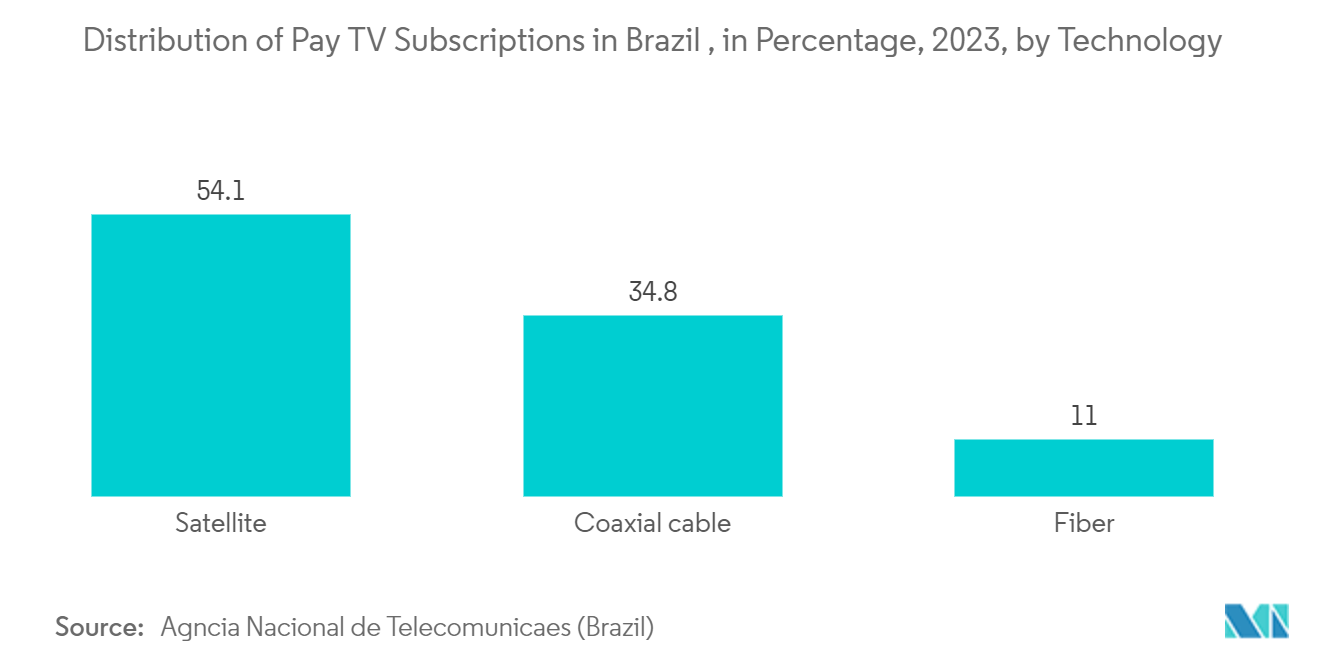
Geostationary Orbit Segment to Hold a Significant Market Share
- Satellites in Geostationary Orbit offer continuous coverage of a specific region, including Brazil. Due to their fixed position relative to the Earth, these satellites can provide uninterrupted observation and monitoring of the designated area. This continuous coverage is particularly valuable for applications such as weather forecasting, environmental monitoring, and disaster management, where real-time data is crucial.
- Geostationary satellites have a wide field of view and can cover a large geographic area, making them suitable for monitoring vast regions such as Brazil. These satellites can capture high-resolution images and collect data over various applications, including land and resource management, agriculture, urban planning, and infrastructure development.
- Moreover, geostationary satellites provide Earth observation capabilities and serve as communication hubs for transmitting data, voice, and video signals. This dual functionality makes them highly valuable in the Brazil Satellite-based Earth Observation market, as they can facilitate efficient data transfer and communication between ground stations and remote areas, contributing to various sectors such as telecommunication, broadcasting, and internet connectivity.
- According to data from the Ministry of Communications, Government of Brazil, geostationary satellites accounted for the majority of the satellites in commercial operation in Brazil in 2022, with about 43 satellites operated by 24 operators. The number of non-geostationary satellites was seven, with eight operators. This data reflects the country's significant presence and activity of geostationary satellite operators.
- In addition, the Geostationary Orbit segment presents significant business opportunities for satellite operators, manufacturers, and service providers. Companies can develop and deploy geostationary satellites tailored to the specific needs of Brazil, offering Earth observation and communication services to government agencies, commercial entities, and other end-users.
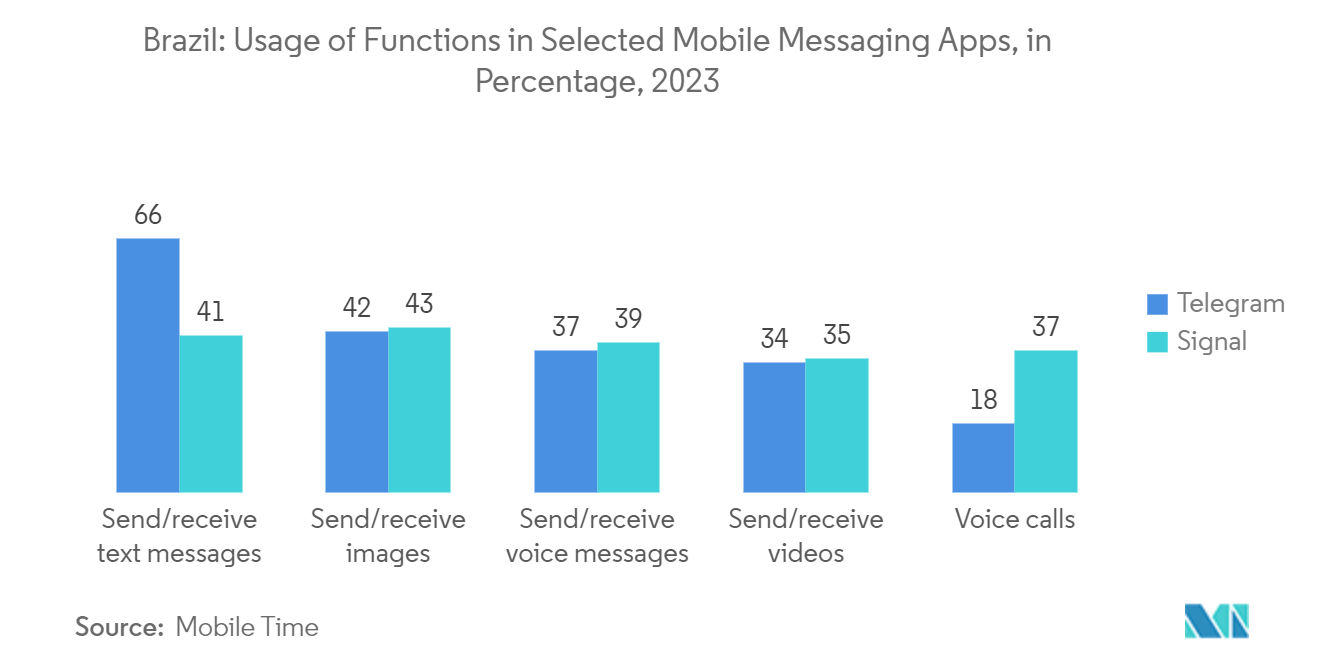
Competitive Landscape
The Brazil Satellite-based Earth Observation Market is expected to be a fragmented market. The market consists of various satellite operators, both domestic and international, offering satellite-based earth observation services in Brazil. National Institute for Space Research (INPE), Visiona Tecnologia Espacial S.A., Embratel Star One, Brazilian Space Agency (AEB), and Embraer S.A. are a few prominent players operating in the market.
In May 2023, the European Space Agency (ESA) released a radar image from Copernicus Sentinel-1 that depicts the city of Sao Paulo and a portion of the same-named state in southeast Brazil. The blue channel is assigned to the first photograph, taken on December 1, 2022; green to the second on January 6, 2023; and red to the third on February 11, 2023.
In August 2022, the EarthDaily satellite constellation, a complete global change detection and analysis system in the world, including operations in Brazil, was announced to be launched by EarthDaily Analytics, the parent company of EarthDaily Agro. The satellites will gather scientific-grade and analytics-ready pictures of the Earth's surface through a unique mix of 23 spectral bands, which will be taken every day simultaneously and made accessible within hours through a cloud-based platform.
Brazil Satellite-based Earth Observation Industry Leaders
-
National Institute for Space Research (INPE)
-
Visiona Tecnologia Espacial S.A.
-
Embratel Star One
-
Brazilian Space Agency (AEB)
-
Embraer S.A.
- *Disclaimer: Major Players sorted in no particular order
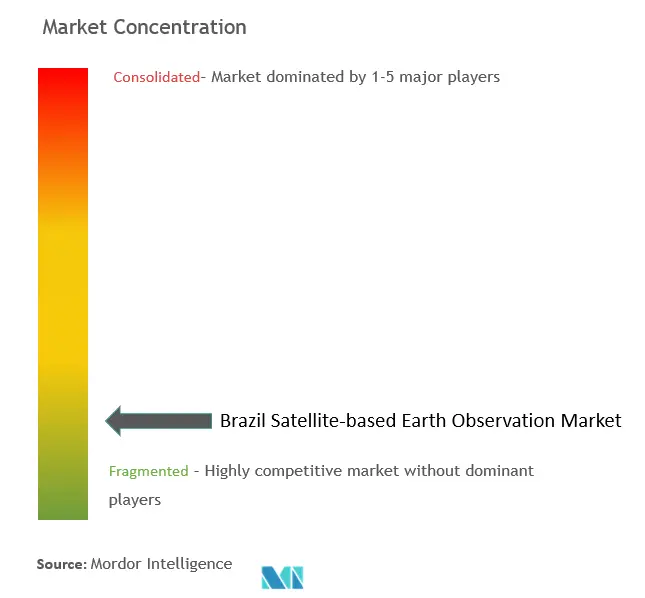
Recent Industry Developments
- June 2023: The GEO Open Data and Open Knowledge Workshop featured a presentation of the Brazil Data Cube initiative. The Data Working Group, the GEOSS Platform, and the GEO Knowledge Hub teams organized the two-day Open Data and Open Knowledge workshop. The workshop provides the GEO community with a forum to discuss recent technological developments, difficulties, and potential solutions.
- March 2023: According to Brazilian Science and technology minister Luciana Santos, Brazil plans to construct a new Earth Resources Satellite Programme (CBERS) satellite with China within the next six months. This sixth satellite that will be created with China is crucial to enhance their Amazon monitoring organizations and conduct climate studies.
Brazil Satellite-based Earth Observation Market Report Scope
Satellite-based earth observation is done with the help of satellites orbiting around the planet to view and identify environmental changes, map making, etc. Satellite-based earth observation technology captures and stores information from satellites relating to the physical, biological, and chemical compositions of the earth for monitoring, surveillance, and decision-making in various verticals, such as defense and intelligence, infrastructure and engineering, natural resource management, energy and power, and disaster management.
The Brazil satellite-based earth observation market is segmented by type (earth observation data, value-added services), satellite orbit (low earth orbit, medium earth orbit, geostationary orbit), and end-use (urban development and cultural heritage, agriculture, climate services. energy and raw materials, infrastructure). The market sizes and forecasts are provided in terms of value (USD) for all the above segments.
| Earth Observation Data |
| Value Added Services |
| Low Earth Orbit |
| Medium Earth Orbit |
| Geostationary Orbit |
| Urban Development and Cultural Heritage |
| Agriculture |
| Climate Services |
| Energy and Raw Materials |
| Infrastructure |
| Others |
| By Type | Earth Observation Data |
| Value Added Services | |
| By Satellite Orbit | Low Earth Orbit |
| Medium Earth Orbit | |
| Geostationary Orbit | |
| By End-use | Urban Development and Cultural Heritage |
| Agriculture | |
| Climate Services | |
| Energy and Raw Materials | |
| Infrastructure | |
| Others |
Key Questions Answered in the Report
How big is the Brazil Satellite-based Earth Observation Market?
The Brazil Satellite-based Earth Observation Market size is expected to reach USD 0.25 billion in 2025 and grow at a CAGR of 7.67% to reach USD 0.36 billion by 2030.
What is the current Brazil Satellite-based Earth Observation Market size?
In 2025, the Brazil Satellite-based Earth Observation Market size is expected to reach USD 0.25 billion.
Who are the key players in Brazil Satellite-based Earth Observation Market?
National Institute for Space Research (INPE), Visiona Tecnologia Espacial S.A., Embratel Star One, Brazilian Space Agency (AEB) and Embraer S.A. are the major companies operating in the Brazil Satellite-based Earth Observation Market.
What years does this Brazil Satellite-based Earth Observation Market cover, and what was the market size in 2024?
In 2024, the Brazil Satellite-based Earth Observation Market size was estimated at USD 0.23 billion. The report covers the Brazil Satellite-based Earth Observation Market historical market size for years: 2019, 2020, 2021, 2022, 2023 and 2024. The report also forecasts the Brazil Satellite-based Earth Observation Market size for years: 2025, 2026, 2027, 2028, 2029 and 2030.
Page last updated on:
Brazil Satellite-based Earth Observation Market Report
Statistics for the 2025 Brazil Satellite-based Earth Observation market share, size and revenue growth rate, created by Mordor Intelligence™ Industry Reports. Brazil Satellite-based Earth Observation analysis includes a market forecast outlook for 2025 to 2030 and historical overview. Get a sample of this industry analysis as a free report PDF download.
